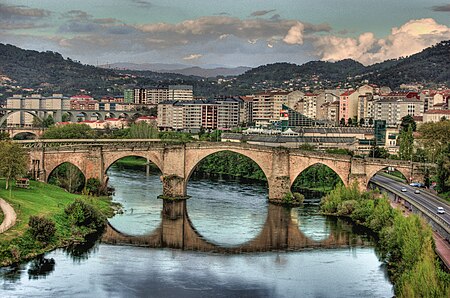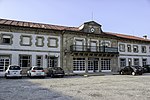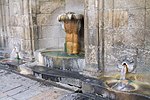Ponte Vella
Bridges completed in the 13th centuryBridges in Galicia (Spain)Buildings and structures completed in 1230Minho (river)Ourense ... and 1 more
Pedestrian bridges in Spain

Ponte Vella (Galician, "old bridge", Ponte Romana (Roman bridge), Ponte Maior (great bridge)) is a medieval footbridge built on Roman foundations in Ourense, Spain. Located at the intersection of N120 and Rua Progreso, it spans the Minho River. Its steep rise of 135 feet (41 m) above the Minho River makes for safe passage during flash floods. At one time, it was considered to be the biggest bridge in all of Spain.
Excerpt from the Wikipedia article Ponte Vella (License: CC BY-SA 3.0, Authors, Images).Ponte Vella
Rúa da Ponte Romana, Ourense A Ponte
Geographical coordinates (GPS) Address Nearby Places Show on map
Geographical coordinates (GPS)
| Latitude | Longitude |
|---|---|
| N 42.345277777778 ° | E -7.8686111111111 ° |
Address
Rúa da Ponte Romana
Rúa da Ponte Romana
32003 Ourense, A Ponte
Galicia, Spain
Open on Google Maps









